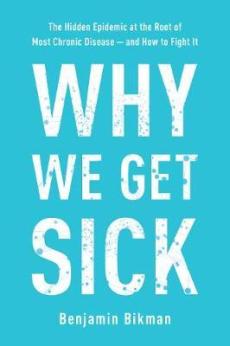
Why We Get Sick – Benjamin Bikman PhD
(Buy from Amazon; Buy from The Book Depository)
A scientist reveals the groundbreaking evidence linking many major diseases, including cancer, diabetes, and Alzheimer’s disease, to a common root cause—insulin resistance—and shares an easy, effective plan to reverse and prevent it.
We are sick. Around the world, we struggle with diseases that were once considered rare. Cancer, heart disease, Alzheimer’s disease, and diabetes affect millions each year; many people are also struggling with hypertension, weight gain, fatty liver, dementia, low testosterone, menstrual irregularities and infertility, and more. We treat the symptoms, not realizing that all of these diseases and disorders have something in common.
Each of them is caused or made worse by a condition known as insulin resistance. And you might have it. Odds are you do—over half of all adults in the United States are insulin resistant, with most other countries either worse or not far behind.
In Why We Get Sick, internationally renowned scientist and pathophysiology professor Benjamin Bikman explores why insulin resistance has become so prevalent and why it matters. Unless we recognize it and take steps to reverse the trend, major chronic diseases will be even more widespread. But reversing insulin resistance is possible, and Bikman offers an evidence-based plan to stop and prevent it, with helpful food lists, meal suggestions, easy exercise principles, and more. Full of surprising research and practical advice, Why We Get Sick will help you to take control of your health.
Disclaimer: This page contains affiliate links that may provide monetary compensation to help support the Whole Guidance Vision of Creating a Happy and Healthy Planet should you make a purchase. We very much appreciate and thank you for your support.
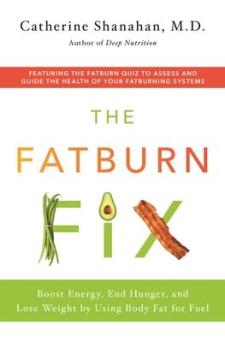
The Fatburn Fix – Catherine Shanahan MD
(Buy from Amazon; Buy from The Book Depository)
A proven plan to optimize your health by reclaiming your natural ability to burn body fat for fuel
The ability to use body fat for energy is essential to health―but over decades of practice, renowned family physician Catherine Shanahan, M.D., observed that many of her patients could not burn their body fat between meals, trapping them in a downward spiral of hunger, fatigue, and weight gain.
In The Fatburn Fix, Dr. Shanahan shows us how industrially produced vegetable oils accumulate in our body fat and disrupt our body’s energy-producing systems, driving food addictions that hijack our moods and habits while making it nearly impossible to control our weight. To reclaim our health, we need to detoxify our body fat and help repair our “fatburn” capabilities.
Dr. Shanahan shares five important rules to fix your fatburn:
1) Eat natural fats, not vegetable oils.
2) Eat slow-digesting carbs, not starchy carbs or sweets.
3) Seek salt.
4) Drink plenty of water.
5) Supplement with vitamins and minerals.
She then provides a revolutionary, step-by-step plan to help reboot your fatburn potential in as little as two weeks. This customizable two-phase plan is widely accessible, easy to follow, and will appeal to the full spectrum of diet ideologies, from plant-based to carnivore to keto and beyond. By making a few changes to what you eat and when, you will lose unwanted weight and restore your body’s ability to store and release energy.
With The Fatburn Fix, Dr. Shanahan shows how regaining your fatburn is the key to effortless weight loss and a new, elevated life, paving the way to abundant energy and long-term health and happiness.
Disclaimer: This page contains affiliate links that may provide monetary compensation to help support the Whole Guidance Vision of Creating a Happy and Healthy Planet should you make a purchase. We very much appreciate and thank you for your support.
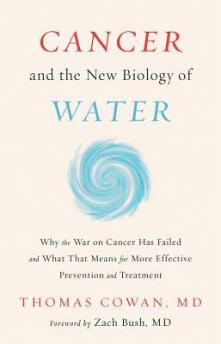
Cancer and the New Biology of Water – Dr Thomas Cowan MD
(Buy from Amazon; Buy from The Book Depository)
Why the War on Cancer Has Failed and What That Means for More Effective Prevention and Treatment
A groundbreaking look at the role of water in living organisms that ultimately brings us closer to answering the riddle of the etiology of, and therapy and treatment for, cancer
When President Nixon launched the War on Cancer with the signing of the National Cancer Act of 1971 and the allocation of billions of research dollars, it was amidst a flurry of promises that a cure was within reach. The research establishment was trumpeting the discovery of oncogenes, the genes that supposedly cause cancer. As soon as we identified them and treated cancer patients accordingly, cancer would become a thing of the past.
Fifty years later it’s clear that the War on Cancer has failed―despite what the cancer industry wants us to believe. New diagnoses have continued to climb; one in three people in the United States can now expect to battle cancer during their lifetime. For the majority of common cancers, the search for oncogenes has not changed the treatment: We’re still treating with the same old triad of removing (surgery), burning out (radiation), or poisoning (chemotherapy).
In Cancer and the New Biology of Water, Thomas Cowan, MD, argues that this failure was inevitable because the oncogene theory is incorrect―or at least incomplete―and based on a flawed concept of biology in which DNA controls our cellular function and therefore our health. Instead, Dr. Cowan tells us, the somatic mutations seen in cancer cells are the result of a cellular deterioration that has little to do with oncogenes, DNA, or even the nucleus. The root cause is metabolic dysfunction that deteriorates the structured water that forms the basis of cytoplasmic―and therefore, cellular―health.
Despite mainstream medicine’s failure to bring an end to suffering or deliver on its promises, it remains illegal for physicians to prescribe anything other than the “standard of care” for their cancer patients―no matter how dangerous and ineffective that standard may be―and despite the fact that gentler, more effective, and more promising treatments exist. While Dr. Cowan acknowledges that all of these treatments need more research, Cancer and the New Biology of Water is an impassioned plea from a long-time physician that these promising treatments merit our attention and research dollars and that patients have the right to information, options, and medical freedom in matters of their own life and death.
Disclaimer: This page contains affiliate links that may provide monetary compensation to help support the Whole Guidance Vision of Creating a Happy and Healthy Planet should you make a purchase. We very much appreciate and thank you for your support.
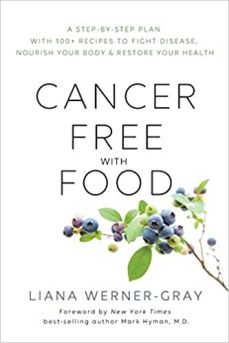
Cancer-Free with Food – Liana Werner-Gray
(Buy from Amazon; Buy from The Book Depository)
The best-selling author of The Earth Diet offers a simple yet comprehensive guide to nutrition for those who have been diagnosed with cancer. With a foreword by Mark Hyman, M.D.
If you want to fight cancer, what should you eat?
Food is medicine. By now, this important message has made its way from holistic circles to the mainstream. To ward off cancer and decrease its risk, meals specially formulated to nourish, soothe, and fortify can be an important part of treatment. But what foods work best? That remains frustratingly elusive and time-consuming to research.
Happily, author Liana Werner-Gray–known for her best-selling books including The Earth Diet and 10-Minute Recipes–has done the research for you. Within these pages she has gathered the best foods for various types of cancer, along with 195 simple and tested recipes created to boost your immune system and promote healing. Designed to work on their own or in conjunction with other therapies, these healthy and appealing meals can also be tailored for a gluten-free, keto, vegan, and paleo diet.
* For skin cancers, try Walnut “Meatballs” (page 210)
* For lung cancer, try Cauliflower Popcorn (page 223)
* For breast cancers, try an Orange Arugula Avocado Sesame Seed Salad (page 249)
* For prostate cancer, try Vanilla Pudding (page 335)
* For liver cancer, try Bentonite Clay Drink (page 193)
“An extraordinarily relevant book . . . Cancer-Free with Food is medicine for the 21st century.”
— Mark Hyman, M.D., director, Cleveland Clinic Center for Functional Medicine.
“In Cancer-Free with Food, Liana shows how to turn your kitchen into a pharmacy so that you can take care of your health at the most fundamental and important level.”
— Ty M. Bollinger, New York Times best-selling author of The Truth About Cancer
“An essential guide for anyone diagnosed with cancer.”
— Josh Axe DNM, DC, CNS, certified doctor of natural medicine, doctor of chiropractic and clinical nutritionist, and author of Eat Dirt
“Cancer-Free with Food is a guidebook for anyone looking to heal their body from the inside out.”
— Vani Hari, New York Times best-selling author of The Food Babe Way
Disclaimer: This page contains affiliate links that may provide monetary compensation to help support the Whole Guidance Vision of Creating a Happy and Healthy Planet should you make a purchase. We very much appreciate and thank you for your support.
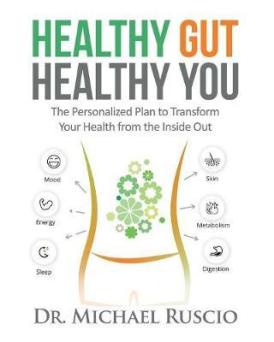
Healthy Gut, Healthy You – Dr. Michael Ruscio
(Buy from Amazon; Buy from The Book Depository)
Over two thousand years ago, Hippocrates said that all disease begins in the gut. Now backed by extensive scientific research, this idea still holds true today. In Healthy Gut, Healthy You, clinician and researcher Dr. Michael Ruscio shows how modern lifestyle changes and the widespread use of antibiotics have made our guts–and the essential bacteria they contain–more vulnerable than ever before.
The good news is that almost any ailment–including depression, fatigue, weight gain, autoimmunity, insomnia, and hypothyroidism–can be healed. The key is not just managing the symptoms but treating the root cause: the gut. Restoring this crucial part of your overall health improves the performance of your whole body from the inside out–and it’s easier than you think to get started.
You don’t have to follow crazy diets or spend a fortune to get healthy. Instead, read this book to discover
how the gut works and its role in your body, practical diet and lifestyle advice to support your gut health, simple and actionable tools to repair your gut, and an innovative, user-friendly plan to heal, support, and revitalize your gut.
A vibrant, healthy you begins with your gut–start healing your body today!
Disclaimer: This page contains affiliate links that may provide monetary compensation to help support the Whole Guidance Vision of Creating a Happy and Healthy Planet should you make a purchase. We very much appreciate and thank you for your support.
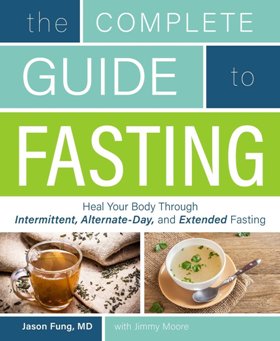
The Complete Guide to Fasting – Jason Fung MD, Jimmy Moore
(Buy from Amazon; Buy from The Book Depository)
Thousands of books have been written about the latest and greatest diets that will help people lose weight and improve health. But a key element in any successful nutritional health program is a tried-and-true method that most people haven’t thought about—yet it could be revolutionary for taking health to the next level. This ancient secret is fasting.
Fasting is not about starving oneself. When done right, it’s an incredibly effective therapeutic approach that produces amazing results regardless of diet plan. In fact, Toronto-based nephrologist Dr. Jason Fung has used a variety of fasting protocols with more than 1,000 patients, with fantastic success. In The Complete Guide to Fasting, he has teamed up with international bestselling author and veteran health podcaster Jimmy Moore to explain what fasting is really about, why it’s so important, and how to fast in a way that improves health. Together, they make fasting as a therapeutic approach both practical and easy to understand.
The Complete Guide to Fasting explains:
• why fasting is actually good for health
• who can benefit from fasting (and who won’t)
• the history of fasting
• the various ways to fast: intermittent, alternate-day, and extended fasting
• what to expect when starting to fast
• how to track progress while fasting
• the weight loss effects of fasting
• how to ward off potential negative effects from fasting
The book also provides tools to help readers get started and get through their fasts, including a 7-Day Kick-Start Fasting Plan and healing liquid recipes.
Disclaimer: This page contains affiliate links that may provide monetary compensation to help support the Whole Guidance Vision of Creating a Happy and Healthy Planet should you make a purchase. We very much appreciate and thank you for your support.
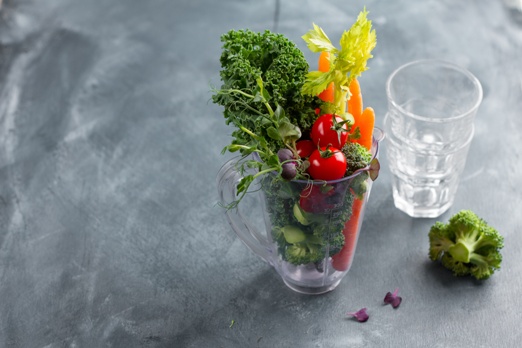
Podcast: Play in new window | Download
In this podcast I’ll be exploring Juicing and Blending:
- I’ll explain why consuming juices and smoothies are important for happiness and health
- I’ll talk about the differences and the pros and cons between juicing and blending vegetables and fruits
- Finally, I’ll share tips on how to turn your juices and smoothies into a healing elixir
CLICK HERE TO LEARN WHAT ARE THE BEST FOODS TO GET YOU LEAN
Everyone knows that vegetables and fruits are packed-full of phytonutrients, plant chemicals that have powerful medicinal and healing effects in your body. Plant power fuels and nourishes animal life on this planet. Without the antioxidant, anti-inflammatory, antimicrobial, and immune-boosting benefits you get from consuming plant matter it becomes very difficult, but not impossible, just hard to give your body the nutritional, energetical, and informational support it needs to thrive.
Unless you live in the North and South poles where you’re exposed to cold with its own unique healing powers and are consuming a lot of nutritionally dense rich blubberous animal fats and their offal then plant foods are going to be a necessity in your diet.
Juicing and blending your vegetables and fruits into juices and smoothies are an excellent and simple way to get more plant medicine into your diet.
When you juice you’re making juices and when you blend you’re making smoothies. Juicing is very different to blending, which makes juices very different to smoothies.
Plants are made up of mostly water much like your own body and also a carbohydrate known as fibre. Fibre is indigestible by your body’s digestive system. This fibre though it is the perfect food for the trillions of microorganisms that live in your gut, in your digestive tract and your gut microbiome plays a huge role in your digestion and in keeping your immune system running optimally.
Fibre is the difference between juicing vegetables and fruits into juices verses blending them into smoothies. When you juice, using a juicer obviously, what you’re doing is separating the fibrous plant material from the water and this water contains a majority of the phytonutrients. This leaves you with a very watery drink and a lot of fibre leftover. When you blend, using a blender obviously, what you’re doing here is pulverising, chopping, mashing 100% of the plant material fibre and all leaving you with a thick drink.
There are benefits and drawbacks to both juicing and blending.
The primary benefit to having juices and smoothies is that they are a very simple, nutritious and delicious way to increase your consumption of vegetables. Not everyone can manage to eat 3 to 9 cups of vegetables a day, but you can easily get 3 cups of a variety of vegetables in one juice or smoothie.
For example in my green smoothie that I have for dinner most nights I put in a quarter cup of parsley. You have probably seen a tiny pinch of parsley used mainly as a garnish and sure that tiny amount tastes okay, but can you imagine eating 4 tablespoons worth of chopped parsley? Maybe spread out evenly over a day, but for me I like getting my parsley dose in one hit and it’s so much easier and tastier mixed into a smoothie.
Now the main benefit to juicing and drinking juices is that they are an easily digested and quickly absorbed source of nutrition and energy. For people with digestive issues, energy issues, and for those who are severely malnourished drinking green juices will be easier on your body allowing your body to absorb more of the nutrients in that juice. It takes about 20 minutes for a juice to be fully digested and absorbed compared to a few hours for a full-blown meal.
Also because your body doesn’t need to spend a lot of energy digesting your juice it will have more energy that can be used elsewhere such as for repairing damaged tissues, increasing detoxification processes, and producing more neurotransmitters and sex hormones.
The thing is the main benefit to juicing, easy digestion and quick absorption, is also one of its drawbacks. But this all depends on what you’re actually juicing. Fruit juices are not healing drinks like green juices are. This is because of the high amount of fruit sugars present in fruits. Remember juicing extracts the water and the nutrients and separates them from the fibre and fibre helps slow down the release of sugar from your gut into your bloodstream. Without the fibre in the juice that sugar is going to hit your system very quick and very hard causing a massive insulin response which is something you don’t want to happen on a regular basis. Listen to the previous podcast I did on the blood sugar rollercoaster for more info on that.
Now you may be thinking to yourself, but it’s natural sugar from real food. Whether sugar is found naturally in real food or refined and added by the spoonful once sugar hits your digestive tract your body doesn’t know the difference. Sugar is sugar. Except if there’s fibre present then your body and your gut microorganisms will deal with that sugar differently. Not just fibre, but fats and acids help with this as well, but I’ll talk more about those later. This is why eating fruits in their whole intact form is a lot better for you than fruit juices and it doesn’t matter if the juices are bought from the shop or made fresh at home. Sugar without fibre is processed sugar to your body.
The other downside to drinking juices is that you cannot extract all the water and nutrients bound to the fibre. Even with the slowest spinning masticating juicers you will always be missing out on nutrients when you juice.
Final drawback to juicing I’ll mention is when you’re using a centrifugal juicer, one that spins at high-speed in the thousands of RPMs or revolutions per minute, a centrifugal juicer will suck in more oxygen which creates more oxidation or damage to the nutrients. Not only do high-speed juicers cause damage, but they also do not extract as much juice as slow masticating juicers do. Even if you do use a masticating juicer that can spin as low as 65 RPMs, as I talked about before you will not be able to extract all the water and nutrients from the fibre.
Moving onto smoothies.
The good thing about smoothies, besides being a simple way to increase your vegetable consumption, is that you are eating the whole food, the entire vegetable and fruit meaning you get the fibre, the nutrients, the water, the whole deal. You are not missing out on anything that may be lost when you juice. This means that even if you do add some fruit to your blended smoothies the release of sugar into your bloodstream will be a lot slower than fruit that’s been juiced.
There is a similar drawback to blending just as there is in juicing if your smoothie is made up mostly or 100% of fruit. For people with metabolic disorders meaning they are unable to digest and metabolise sugar properly due to hormonal imbalances, a fruit smoothie will be doing more harm than healing and can be just as bad as a fruit juice.
Last downside to blending again similar to juicing is that these blenders spin at super high speeds that will cause damage both physically by the blades and oxidatively by sucking in more oxygen.
Alright so how do you make healing juices and smoothies?
First things first – you got to reduce the sugar hit. When designing a juice or smoothie for healing, obviously you don’t want to add any additional sweeteners artificial or natural including maple syrup and honey due to sugars ability to upset your hormonal rhythms and to suppress your immune system.
When it comes to juices you want to be drinking healing green juices with little to no fruit added. I like using kale, cucumber, celery, and some ginger as a base for all my green juices. From here you can add whatever else you like. I recommend adding in some herbs as pound for pound herbs are more nutritionally dense than their larger plant cousins.
The only fruits I recommend for juicing are lemons, limes, kiwifruit, and a green apple. The acidity in lemon and lime help with your digestion and blood sugar balance. The gelatinous nature and compounds in kiwi also help with digestion and green apples are a bit of a compromise when it comes to taste. If you find green juices too bitter then adding one green apple including the apple seeds, especially the apple seeds, can help make the juice sweeter without being too heavy in fruit sugars, with the added bonus of having the low dose of cyanide that come from the apple seeds. No this cyanide isn’t going to kill you, but it’s a great cancer regulator. By that I mean cancer cells love sugar. So when you eat your juice (yes I said eat, not drink) a lot of the sugars will be picked up by cancer cells. The cyanide will piggyback on this metabolism and will also be taken up by those cancerous cells causing them to do what mainstream medicine fails to do – the cyanide causes cancerous cells to die.
Okay other vegetables to improve on taste while at the same time improve healing are carrots, beetroot, and orange kumara or orange sweet potato. The cool thing about the sweet potato is not only does it give you a bunch of beta-carotene and a touch of sweetness, but it also gives the juice a creamy texture. If a spoonful of sugar helps the medicine go down, then a bit of lemon juice and sweet potato helps the green juice go down, no doubt about it.
To help lower the glycaemic response, the rate at which sugar gets released into your bloodstream, you can mix in some raw unfiltered apple cider vinegar with the mother. This means apple cider vinegar that hasn’t been pasteurised and that looks murky. The bottle should not be clear looking. You should see the mother, which is a collection of friendly bacteria and other beneficial compounds, you should see the mother at the bottom of the bottle so be sure to shake it up before mixing into your juice.
Another thing you want to do when consuming green juices is to eat some fat with your juice. I recommend eating a spoonful of coconut oil or extra-virgin olive oil right before or right after your juice. There are a lot of fat-soluble micronutrients in vegetables and they need fat to be absorbed during digestion. So by eating some fat with your juice you can increase the amount of nutrients your body absorbs and assimilates.
Final tip for designing a very healing juice is that you must use a slow masticating horizontal juicer. A high-speed juicer is destroying a majority of the nutrients wasting a lot of that precious plant medicine. A vertical masticating juicer is much better and does more than just juice. It can make nut milks and sorbets as well. The difference between a vertical and horizontal juicer is that while the vertical is better for getting more juice out of fruits it doesn’t do a good job of extracting water and nutrients from non-starchy vegetables, especially green leafy vegetables. Now a horizontal masticating juicer can also make nut milks and sorbets like the vertical one and it is the best juicer for healing as it gets more medicine out of vegetables. If you have the cash go for a juicer with twin juicing abilities to get more out of your vegetables. Or you can simply put the fibre or leftover pulp back into your juicer a second time to get even more medicine out of the plants.
I do have a tip relating to juicing, but not to do with the juice itself. The pulp, the fibre that’s leftover, don’t toss this in the trash. Use it in your compost for your garden or dehydrate the fibre to make healthy crackers.
Remember the base of the green juice I mentioned earlier and play around and make your own recipes from there.
When it comes to healing green smoothies similar guidelines apply.
I use as a liquid base for all my green smoothies one cup of water, a pinch of sea salt, a tablespoon of apple cider vinegar or lemon juice, and a tablespoon of extra-virgin coconut oil. You can use any healthful animal or fruit fat you like and any liquid you like so long as there’s no added sweeteners and chemicals.
Coconut milk and unsweetened almond milk are okay substitutes for water, but even better than water (yes better than water if you can tolerate dairy that is) is raw yoghurt, specifically raw milk kefir. This gives your body more beneficial microorganisms or probiotics. But wait there’s more and something even better than water and kefir for healing (if you tolerate monosodium glutamate or MSG that is) and that’s bone broth made from bones from happy and healthy animals free to roam outdoors and eating their natural species appropriate diet.
“A good broth can raise the dead”
Is a South American proverb and by using bone broth in your healing green smoothie you will increase your body’s innate ability to heal exponentially. If you don’t have any bone broth handy you can always add a tablespoon or two of gelatine or collagen which have similar health benefits to bone broth including repairing your gut and improving joint and skin health.
You can add whatever non-starchy green-leafy cruciferous coloured sulphurous vegetables you want to your smoothie, but when it comes to fruit I would stick to berries and the juice of lemons or limes to keep your smoothie a healing drink. Celery I include as a base in all of my green smoothies. Celery helps normalise blood pressure and aids with digestion. Adding in herbs and spices is a must for the best tasting and healing green smoothie. Parsley and cinnamon are my go to herb and spice. Parsley is a great blood purifier and it reduces body odour and cinnamon will improve overall flavour and help stabilise blood sugar levels.
Oh and when I say green here, in terms of green juice or green smoothie, I don’t just mean literally green, I also mean a high vegetable low fruit drink. So even if your juice or smoothie isn’t the colour green it’s green in my book if there’s not high amounts of fruit and sugar in it.
A couple of taste and healing combinations I’ve found too good to be true when it comes to smoothies are avocado, a tiny amount of red onion, and coriander aka cilantro aka Chinese parsley. Think a guacamole drink. Also raw cacao powder with mint leaves. Yep a mint chocolate drink and when you add in an avocado to your mint chocolate you get a mint chocolate mousse. Mmm hmm, tasty!
Another taste enhancer, well really a texture enhancer is to add cacao nibs or coconut flakes to your smoothie near the end of blending to give it some crunch or sprinkle some crushed nuts or seeds on top of your drink after blending. And by the way peanuts are legumes, not nuts.
One final blending tip is to add a quarter to half a teaspoon of powdered vitamin C to your smoothie. This acts as an antioxidant and protects against oxidative damage that happens when you blend at high-speeds. Also it gives a little bit of tang to your smoothie.
If you really cannot do without fruits or starchy vegetables in your green drinks then you can still make these healing drinks by consuming them post workout. Your muscle cells are more sensitive to insulin after intense exercise so by timing the intake of your sweet green drink after a workout you reduce the impact the sugar will have on your body.
Final overall tip and this is an absolute requirement when it comes to turning a typical green drink into a healing elixir and I mentioned this earlier and that is you must eat your juice or smoothie, not drink it. Meaning you must chew the watery or thick liquid in your mouth for a few seconds, get your digestive enzyme containing saliva all up in that drink before you swallow. Chewing is one of the early stages of digestion, which I talked about back in episode 9, and without this crucial step you’re literally wasting most of the beneficial plant medicine in your drink as your body will quickly eliminate whatever isn’t covered in your digestive enzymes when it hits your digestive tract. Chewing your green drink will turn it into a more potent healing elixir. So no straws please. Drink it straight from the mug or cup.
I’ll put a couple of links to a juicer and blender I recommend in the blog post for this episode.
Look there’s no limits to how you make your juice or smoothie really. It’s up to you. Whatever floats your boat and makes your taste buds sing. However, there are limits to making your green drink a healing drink.
So remember keep the sugar low, add in some animal or fruit fats, move before you eat, and above all else listen to your body.
“If your green drink makes you feel stink or look green or pink, it’s time to rethink your green drink.”
Okay so which is better for healing? Juicing or blending? Well it depends on what you put in your drink, and also how and when you eat it.
Links and Resources
- WGP 040: Riding the Blood Sugar Roller Coaster to Hormone Hell
- WGP 009: Digestion – How to Eat Real Food
- Optimum Slow Juicer
- Optimum High Speed Vortex Blender
- Omega Horizontal Masticating Juicer
Please leave a 5-star iTunes review for the Whole Guidance Podcast
Podcast: Play in new window | Download
Subscribe: iTunes | Stitcher Radio | Android | RSS
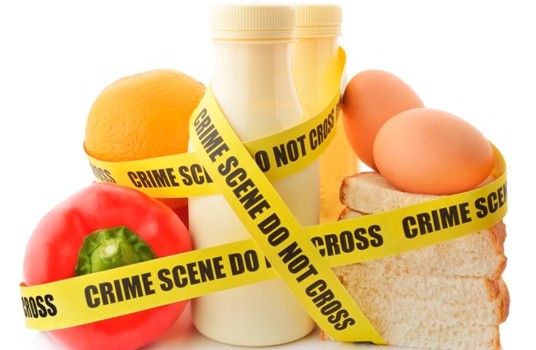
Podcast: Play in new window | Download
In this podcast I’ll be exploring Food Sensitivities:
- I’ll explain the difference between food allergies, food intolerances, and food sensitivities
- I’ll talk about the many many health issues associated with food sensitivities
- Finally, I’ll share 5 ways you can identify foods your body is most sensitive to
CLICK HERE TO LEARN WHAT ARE THE BEST FOODS TO GET YOU LEAN
Most people have heard about food allergies, like a peanut allergy and food intolerances, like lactose intolerance. But not many people know about food sensitivities.
Let me explain the difference between the three of these.
Now a food allergy is a dramatic and immediate reaction by your body’s immune system to a particular food that you’ve eaten. Allergic reactions include immediate swelling and itchiness and also anaphylactic shock which can be fatal. The top eight allergenic foods are:
- Peanuts
- Tree nuts
- Wheat
- Shellfish
- Soy
- Milk
- Eggs and
- Fish
Food intolerance on the other hand is a more subtle, minor delayed reaction. We’re talking a few minutes to a few hours here before you experience symptoms. Food intolerances do not involve your immune system and are actually caused by your body not having the right enzymes or not having enough enzyme activity to breakdown the compounds that are in real food or in the chemicals added to fake pretend food-like products. Common food substances that people are intolerant to and do not have the enzymes to fully breakdown include:
- Gluten in grains
- Lactose in dairy
- Biogenic amines like histamine, tyramine, and arginine
- Preservatives and
- Additives
Alright food sensitivities. Now food sensitivities are similar to intolerances in that they provoke a small delayed reaction in your body. When I say delayed I mean delayed. Reaction times to a food your body is sensitive to can vary from hours to weeks. Food sensitivities are similar to allergies in that your immune system is the cause for the reaction, but a different branch of your immune system, which is why instead of an immediate allergic reaction you get a delayed smaller reaction. So a food sensitivity is your body’s immune system having a reaction to the food you eat or the compounds added to or found on the food you eat and these immune reactions are small and can take a while to show up as a visible and noticeable symptom.
Common foods and substances found in food that people are most sensitive to include what I mentioned earlier for allergies and intolerances, but also the following:
- Sugar and sugar alcohols
- Industrial seed oils more commonly known as vegetable oils
- Corn
- Legumes
- Seeds
- Grains whether they contain gluten or not
- Artificial sweeteners
- Alcohol
- Caffeine
- Cacao
- Nightshade vegetables
- Citrus fruits
- Agricultural chemical sprays
- Genetically modified organisms and
- Mould toxins like aflatoxin and ochratoxin most commonly found in peanuts and instant coffee
As you can see when you add up all three food categories together that makes quite the list of food and food compounds that can cause food sensitivities. Keep in mind that these foods and compounds are the most common sensitivities found in people who are experiencing health issues, but you can actually be sensitive to any food. No food is off-limits when it comes to causing negative reactions in your body. Whether it’s seaweed, beef, pork, broccoli, or even beautifully roasted sweet potatoes, food sensitivities can occur with any food.
Let me list (yes another list) the many health issues and symptoms that a food sensitivity can cause:
- Brain fog
- Inability to focus
- Food cravings
- Low energy
- Irritability
- Fatigue
- Insomnia
- Headaches
- Mood swings
- Depression
- Dark circles under your eyes
- Need to clear your throat
- Runny Nose
- Nasal congestion
- Water retention
- Gas
- Constipation
- Diarrhoea
- Bloating
- Indigestion
- Obesity
- Joint pain
- Muscle aches
- Skin issues like rash, itchiness, and acne
- Many autoimmune diseases and other chronic inflammatory conditions
The list just goes on to be honest.
Isn’t it fascinating how all of these health issues and symptoms could be caused just by you eating a single food that your body doesn’t agree with?
Well I think it’s fascinating anyway, because for me I found that the chronic health issues that I had growing up including depression, skin issues, digestive upset, headaches, poor memory, mood swings, a majority of these were caused solely by sensitivities my body had to the foods that I was eating. While the rest of my health problems were a mix of food sensitivities and unhealthy lifestyle factors like the use of toxic personal care products and being in toxic relationships and I figured this out by what I’m about to share with you now.
Here are 5 ways you can identify the foods that your body’s immune system is reacting to.
First method of investigation is by lab testing. In the functional medical health space there are many lab tests you can run, based on blood samples that you give, that will give you a list of foods that your body’s immune system is having a severe, moderate, low or no reaction to. Examples of labs you can use for food sensitivity testing include:
- Cyrex Laboratories Array 3, Array 4, and Array 10
- Oxford Biomedical Technologies MRT or Mediator Release blood test
- Great Plains Laboratory IgG Food Test + Candida and the
- Antigen Leukocyte Antibody Test or ALCAT food test
There are pros and cons to lab testing food sensitivities. The con is they are not 100% accurate, meaning you could be eliminating a food from your diet for no reason at all and you could still be eating a food that your body is having a reaction to based on these tests. The pro is these labs provide a stepping stone in the right direction to eliminating foods that your body is reacting to and it can give certain stubborn individuals who are resistant to change the black and white evidence that they need to take some action even if that evidence isn’t 100% correct. So while these lab tests will not give you all the answers you were hoping for they can give you the motivation you need to change.
Second method to find your food sensitivities is to use your heart rate. When your body has a reaction to something you eat your heart rate will increase. Fifteen minutes before you eat a particular food measure your heart rate for 60 seconds and use this as your baseline. Fifteen minutes after eating measure your heart rate again. If you see a rise of 5 beats or more your body is reacting to that food and that food should be eliminated.
The third method is pretty simple, but you are not going to like what it means. It involves keeping a food log for 7-14 days where you write down everything you eat and also write down any food cravings you have and give into. After a week or two go back over your logs. Look for the most common foods you eat at every meal or every day. For example if you had an entry that read cereal for breakfast, sandwich for lunch, and pasta for dinner then that day was full of wheat, grain and glutenous foods. If a week reads bacon and eggs for breakfast for 7 days then that week was full of egg, pork, and preservative foods. Also note down your cravings and which cravings you could not resist.
Why is all this important?
Well because:
“the foods you eat the most and the foods you crave and give into the most are almost always the foods your body is sensitive to the most.”
So if you just cannot do without your bread, your cheese or ice cream, your morning cup of coffee, or chocolate then your body’s immune system is most likely reacting to the wheat or gluten in bread, to the casein or lactose in dairy, to the caffeine or mould toxins in coffee, and to the arginine or phenethylamine in cacao. I told you you wouldn’t like this method. It may be simple to follow, but can be extremely difficult to execute on because it means removing your most favourite foods.
Muscle testing is another thing you can try to find out which foods your body doesn’t agree with. I talked about this already in podcast 28 – One Diet To Rule Them All. Muscle testing is also known as applied kinesiology and is a form of energy testing where you’re testing the alignment or harmony between your body’s energy signature and that of the food you’re testing. If you find that your muscles become weaker when holding a particular food then your body is sensitive to that food and that food must be eliminated.
The fifth, final, and by far the gold standard for working out your food sensitivities is an elimination diet. Also known as an elimination provocation or elimination challenge diet. This method may be the best most accurate way to find your food sensitivities, but it’s also the most hardest to stick to. It’s the most difficult to implement and follow through on purely because it takes time, patience, and a very acute awareness of your body language.
With an elimination diet you start in the elimination phase where you remove the most highly allergenic, intolerant and sensitive foods from your diet for a period ranging from one month to 12 months depending on how sick you really are. After the elimination phase comes the provocation or challenge phase where one by one you introduce a new food into your diet over a period of 3-4 days and log any reactions your body has after eating that food. If you do notice a reaction you leave that food out of your diet for another 3 months before reintroducing it again. If no reaction you can keep that food in your diet and move onto the next new food to test.
Yes this means it’ll take some time and a lot of patience using an elimination diet to find your food sensitivities, but think of the lessons you will learn about how your body works and think of how much better you will feel and even look.
As an African proverb says:
“Wisdom does not come overnight.”
Your health issues may have taken years before fully developing so it’s going to take at least months before those health issues will minimise and hopefully disappear entirely.
When undergoing an elimination diet it helps to work with a health practitioner for support and guidance and if you need me you know where to find me. But I do have a couple of elimination diets that have their own support networks that I highly recommend.
One is the Whole30 program which uses a paleo template as a guide to help you kick health issues as well as bad food habits by eating real food for 30 days and then introducing suspect foods afterwards. Another is The 21 Day Sugar Detox with the goal of breaking free of sugar and carb cravings. Both of these programs have proven track records and have helped thousands of people get over chronic health conditions with some receiving the added side-effect of reducing their waistline.
I also recommend reading The Elimination Diet by Tom Malterre and Alissa Segersten for more detailed information on how to heal using an elimination diet.
So are your health issues caused by food sensitivities? You won’t know the answer to this until you begin to eliminate foods from your diet for a certain amount of time and then seeing how you feel. By using 1 or all 5 of these food sensitivity testing methods you will find the answer you’re looking for and I suggest you get ready to feel awesome!
Links and Resources
- WGP 028: The One Diet to Rule Them All
- Whole Guidance Holistic Lifestyle Coaching Services
- Whole30 Program
- The 21 Day Sugar Detox
- The Elimination Diet — Tom Malterre, Alissa Segersten
Please leave a 5-star iTunes review for the Whole Guidance Podcast
Podcast: Play in new window | Download
Subscribe: iTunes | Stitcher Radio | Android | RSS
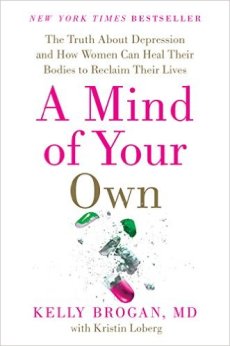
A Mind of Your Own – Kelly Brogan, MD
(Buy from Amazon; Buy from The Book Depository)
New York Times bestseller
Named one of the top health and wellness books for 2016 by MindBodyGreen
Depression is not a disease. It is a symptom.
Recent years have seen a shocking increase in antidepressant use the world over, with 1 in 4 women starting their day with medication. These drugs have steadily become the panacea for everything from grief, irritability, panic attacks, to insomnia, PMS, and stress. But the truth is, what women really need can’t be found at a pharmacy.
According to Dr. Kelly Brogan, antidepressants not only overpromise and underdeliver, but their use may permanently disable the body’s self-healing potential. We need a new paradigm: The best way to heal the mind is to heal the whole body.
In this groundbreaking, science-based and holistic approach, Dr. Brogan shatters the mythology conventional medicine has built around the causes and treatment of depression. Based on her expert interpretation of published medical findings, combined with years of experience from her clinical practice, Dr. Brogan illuminates the true cause of depression: it is not simply a chemical imbalance, but a lifestyle crisis that demands a reset. It is a signal that the interconnected systems in the body are out of balance – from blood sugar, to gut health, to thyroid function– and inflammation is at the root.
A Mind of Your Own offers an achievable, step-by-step 30-day action plan—including powerful dietary interventions, targeted nutrient support, detoxification, sleep, and stress reframing techniques—women can use to heal their bodies, alleviate inflammation, and feel like themselves again without a single prescription.
Bold, brave, and revolutionary, A Mind of Your Own takes readers on a journey of self-empowerment for radical transformation that goes far beyond symptom relief.
Disclaimer: This page contains affiliate links that may provide monetary compensation to help support the Whole Guidance Vision of Creating a Happy and Healthy Planet should you make a purchase. We very much appreciate and thank you for your support.
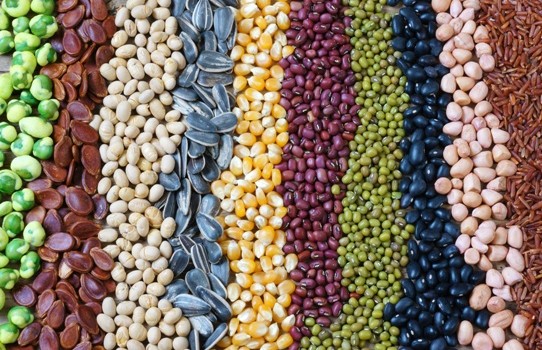
Podcast: Play in new window | Download
In this podcast I’ll be exploring Food Anti-Nutrients:
- I’ll explain what anti-nutrients are
- I’ll talk about how anti-nutrients affect your body and how they affect the absorption of other nutrients
- I’ll list foods that are thought to be extremely nutritious, but really are extremely anti-nutritious
- Finally, I’ll share how to best prepare foods to lower their anti-nutrient content
CLICK HERE TO LEARN WHAT ARE THE BEST FOODS TO GET YOU LEAN
Everyone knows what a nutrient is – a substance that nourishes the mind, body, and soul. But have you heard of anti-nutrients? Anti-nutrients are plant compounds that prevent you, the plant predator, from stealing or absorbing nutrients from the plant.
Believe it or not plants and other living creatures were not put on this planet for the sole purpose of feeding the human race. Plants are sentient life forms, like you and me. They have their own life purpose with the dream of the continuation of their own species and since they don’t have legs to run away or claws to fight off predators they use chemicals to protect themselves. By using biological phytochemical warfare in the form of these anti-nutrients plants increase the chances of their own survival and the survival of their offspring. While at the same time causing a lot of health issues for their predators. So anti-nutrients are a plants innate defence mechanism. These anti-nutrients can negatively affect your health.
Examples of anti-nutrients used by plants include:
- Lectins
- Saponins
- Gluten
- Phytic acid or phytates and
- Enzyme inhibitors
Lectins have been shown to bind to insulin receptors on the walls of your cells. Insulin is the hormone responsible for putting nutrients into your cells and if you’ve had a carb rich meal high in lectins then all that sugar that’s now flowing in your bloodstream cannot be absorbed into your cells because lectin is blocking insulin from attaching to the cell. When sugar is blocked from getting into your cells it’s left to roam in your bloodstream and when it lingers there for far too long this causes damage and inflammation to your cells. Think of your arteries, think of your brain neurons, think of any part of your body where sugar attaches itself to the cells, it becomes glycated, glued to the cell and it causes malfunction and damage. We’ve all heard of diabetes and this is what happens when sugar is left to linger in your bloodstream.
Gluten, saponins and lectins can also cause irritation to your gut, to your intestines. Remember your gut is where most of your nutrient absorption takes place, but if your gut is stressed, inflamed, or compromised then you don’t absorb as much nutrition as you should. Your gut wall is like a net, like a mosquito net where it keeps the pesky bugs out, while letting the proper nutrients in. The problem is lectins, saponins and gluten they’re like mosquitos with little katana blades that cut through the net creating tiny little holes that allow them and other molecules such as undigested food particles and disease causing microorganisms, pathogens, to get into your body.
When you get undigested and unprocessed food particles, pathogens, and other foreign materials in your bloodstream your body mounts an immune response and this leads to inflammation and stress. Now if this stress is chronic and goes on for a long time, if your body has to fight off these pathogens and foreign material that shouldn’t be there day after day because your gut has become leaky this is how you get really sick and get diagnosed with autoimmune conditions like rheumatoid arthritis, lupus, Hashimoto’s, psoriasis, diabetes, and coeliac disease, just to name a few.
When it comes to phytic acid this will bind to minerals meaning that if a food is high in say zinc like pumpkin seeds, but that food is also high in phytic acid then when you eat pumpkin seeds for example you only absorb a small amount of zinc or a small amount of that mineral. This is due to most of the mineral being bound to the phytic acid creating a phytate molecule. So it doesn’t matter the nutrient content of a food if it has high phytic acid content, because that high phytic acid will reduce the amount of minerals you actually get to absorb.
Enzyme inhibitors are substances that stop digestive enzymes from doing their job of breaking down the food you eat. In the case of a trypsin inhibitor it is a protease inhibitor meaning it prevents the breakdown of protein. So if you were to eat a nice chicken salad with green leafy vegetables and pumpkin seeds you may be thinking you’re getting a lot of protein from the chicken and vitamins and minerals from the vegetables. But the trypsin inhibitors and phytates that come from the plant foods will actually bind up a lot of those minerals and they will prevent you from fully digesting and breaking down that protein. Plus the saponins, lectins, and gluten, if it had croutons in the salad, will be tearing up your gut making even less nutrition available for absorption while allowing bad stuff to get directly into your bloodstream. You are getting less nutrition than you think because of these anti-nutrients.
But can you blame plants for these anti-nutrients? If I was a plant I’d make sure predators suffered the consequences too.
I’ll list the main types of foods that are full of nutrients so are thought to be very nutritious and good for you, but actually are also jammed packed and full of anti-nutrients and so turn out to be not that healthy at all. This includes:
- Grains (both gluten-free like rice and corn and gluten containing grains)
- Legumes (beans including soy and peanuts)
- Nuts and
- Seeds
What do all of these have in common, these 4 food groups? Technically these are all seeds of plants. They are the next generation and they will not go down without a fight hence the high anti-nutrient content of these foods. Yes you can still find anti-nutrients in whole vegetables and fruits, but seeds have the highest amounts.
It is true that seeds are full of nutrients and they need to be because within this one seed is an entire plant, but these nutrients are not highly available or absorbable, another way to say it is bioavailable due to the high anti-nutrient content. Remember theses seeds need a way to protect themselves. So even though for 100 g of pumpkin seeds you will see 7.5 mg of zinc in the nutrition profile, you may only get 50% or even less of that zinc because it’s bound to the phytic acid in the pumpkin seed. Same with whole grains and legumes which are full of vitamins and minerals. But they’re also full of gluten, saponins, and lectins and a lot of sugar and starch and excessive intake of all of these will cause gut irritation leading to low vitamin and mineral uptake.
So these nutritious seeds turn out to be more unhealthy than healthy and not just because you absorb less, but also because they cause gut inflammation and stress throughout your entire body.
So how do you make the nutrients in these seeds more bioavailable and also reduce the anti-nutrients and the stress and the inflammation they cause? By using ancestral traditional food preparation methods, that’s how. Yes you have to go back in time in order to improve your future.
Our human ancestors through trial and error figured out that by soaking and sprouting and fermenting grains, legumes, nuts, and seeds they could reduce the anti-nutrient content while at the same time increase the bioavailability of other nutrients. Not only that, but soaking and sprouting and fermenting seeds reduces gut stress by making them a lot more digestible and easier on your stomach.
General soaking and fermenting guidelines are to use filtered water with some natural salt or whey depending on what you’re soaking and letting grains and legumes soak or ferment for 12 to 24 hours and nuts and seeds to soak from 4-144 hours. After soaking you can then dehydrate, lightly roast dry, or cook the seeds. Seeds left to soak for a long time will eventually begin to sprout releasing all that stored up nutrition to feed the growing embryo. Each seed (grains, legumes, nuts) has a different preparation method, so I’m not going to explain every single method in this podcast, but I will put a bunch of links to more information on how to soak and sprout seeds and ferment seeds in the blog post for this episode.
A very awesome book about real food nutrition and traditional cooking methods is Nourishing Traditions by Sally Fallon and Mary Enig. Here’s a passage from that book:
“Traditional societies usually soak or ferment their grains before eating them, processes that neutralize phytates and enzyme inhibitors and, in effect, predigest grains so that all their nutrients are more available. Sprouting, overnight soaking and old-fashioned sour leavening can accomplish this important predigestion process in our own kitchen.”
So you can buy sprouted and fermented breads in the store by looking for sprouted or sourdough breads. Nuts and seeds that have been soaked or sprouted are also called activated nuts and seeds, because this process activates the germination process for growth so look for soaked, sprouted, or activated nuts and seeds on labels. Of course the best grains, legumes, nuts and seeds are raw seeds that you’ve activated at home yourself.
Yes anti-nutrients have their bad side, but they do have a few benefits as well. So the goal isn’t to eat an anti-nutrient ever. The goal is to eat more nutrients compared to anti-nutrients and you do this by properly preparing seeds before you eat them.
Here’s to seed activation.
Links and Resources
- SPROUTING VS SOURING VS SOAKING OF GRAINS — CulturesForHealth.com
- YOUR GUIDE TO SOAKING & SPROUTING WHOLE GRAINS, BEANS, NUTS, & SEEDS — WeedEmAndReap.com
- Nourishing Traditions — Sally Fallon and Mary Enig
Please leave a 5-star iTunes review for the Whole Guidance Podcast
Podcast: Play in new window | Download
Subscribe: iTunes | Stitcher Radio | Android | RSS
